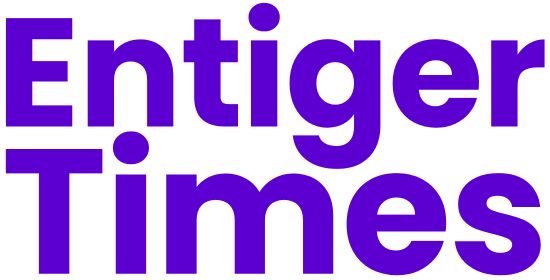The Social Security Administration (SSA) has recently implemented significant changes to the application process for Supplemental Security Income (SSI) and Social Security Disability Insurance (SSDI). These updates aim to streamline the process, making it easier for beneficiaries to receive the essential support they need without unnecessary hurdles.
Contents
- 1 Changes
- 2 Streamlined Application Process
- 3 Benefits of the New Rule
- 4 Improving Federal Customer
- 4.1 Public Assistance Household
- 4.2 $1,450 SSI Payments Post-2025 COLA Increase – Verify Your Eligibility
- 4.3 Social Security Maximum Benefit for Full Retirement Age Workers – Changes Following the 2025 COLA Increase
- 4.4 FAQs
- 4.5 What are SSI and SSDI?
- 4.6 How has the work history requirement changed?
- 4.7 What jobs no longer need to be reported?
- 4.8 How does the new rule benefit applicants?
- 4.9 What is the expanded definition of a public assistance household?
Changes
Previously, applicants needed to provide detailed employment information for the past 15 years to qualify for benefits. This was based on the principle that an individual’s ability to work is a crucial factor in the application process.
Reasons for Change
The SSA often received incomplete, disorganized, or incorrect employment data. For individuals unable to maintain long-term employment due to disabilities, compiling this information was a significant challenge. To address these issues, the SSA has now reduced the requirement to only the last five years of employment history. This change aims to eliminate some of the reporting problems that have previously complicated the system.
Martin O’Malley, Commissioner of Social Security, recently announced this significant reform aimed at easing the application process for SSDI and SSI benefits. O’Malley emphasized, “This new rule will reduce the burden and time our applicants face when filling out information about their work history. It will enable them to focus on the most current and relevant details about their past work. This change will also enhance the quality of information our frontline workers receive, ultimately improving customer service and reducing both case processing time and overall wait times.”
Streamlined Application Process
Applying for SSDI and SSI benefits is known to be a rigorous, multi-step process. Ann Biddle, a litigation supervisor at the Urban Justice Center’s Mental Health Project, elaborated on this in a recent SSA blog post. According to Biddle, applicants must demonstrate that their disability has prevented them from performing substantial work for at least one year or is expected to result in death. A crucial part of this process involves providing a detailed work history.
Work History Challenge
Applicants were often required to compile up to 15 years of work history, including job titles, duties, and dates. This has proven to be a cumbersome task for many. By simplifying the requirements, the new rule aims to alleviate this burden, focusing instead on the most relevant and recent work experiences.
Benefits of the New Rule
- Reduced Application Burden: Applicants can now focus on the most current and relevant details about their past work.
- Improved Information Quality: Frontline workers will receive better-quality information, aiding in more accurate decision-making.
- Enhanced Customer Service: The streamlined process will lead to shorter case processing times and reduced overall wait times.
Additional Simplifications
One key update is the elimination of the requirement for applicants to provide employment details for jobs that lasted less than 30 days. Since these short-term jobs do not represent a substantial source of income, they should not affect benefit calculations. This change is expected to simplify the application process and accelerate the processing time when applications are received.
Improving Federal Customer
These adjustments are part of a broader initiative in response to President Biden’s Executive Order on Transforming Federal Customer Experience and Service Delivery. The goal is to rebuild trust in government services by making them more efficient and user-friendly. The SSA is fully committed to this effort, aiming to enhance the quality of life for its beneficiaries, especially during these challenging economic times.
Public Assistance Household
In addition to streamlining the application process, the SSA has broadened its definition of a public assistance household. This new definition now includes households receiving Supplemental Nutrition Assistance Program (SNAP) payments and households where not all members receive public assistance. This expansion will:
- Allow more people to qualify for Supplemental Security Income (SSI).
- Increase payment amounts for some SSI recipients.
- Reduce the reporting burden on individuals living in public assistance households.
These measures represent a significant step forward in making the application process more inclusive and efficient, ultimately helping more people receive the benefits they need and deserve.
The SSA’s recent changes to the application process for SSI and SSDI benefits are designed to simplify and expedite the process, making it easier for applicants to receive the support they need. By focusing on recent and relevant employment history and eliminating unnecessary requirements, the SSA aims to improve customer service and reduce wait times.
Additionally, expanding the definition of public assistance households will help more people qualify for benefits. These reforms are part of a broader initiative to enhance the efficiency and user-friendliness of federal services, ultimately benefiting millions of people nationwide.
FAQs
What are SSI and SSDI?
SSI and SSDI provide financial support to individuals with disabilities.
How has the work history requirement changed?
Only the last five years of employment history are now required.
What jobs no longer need to be reported?
Jobs lasting less than 30 days do not need to be reported.
How does the new rule benefit applicants?
It reduces the burden of providing detailed work history and improves information quality.
What is the expanded definition of a public assistance household?
It now includes households receiving SNAP payments and those where not all members receive public assistance.













